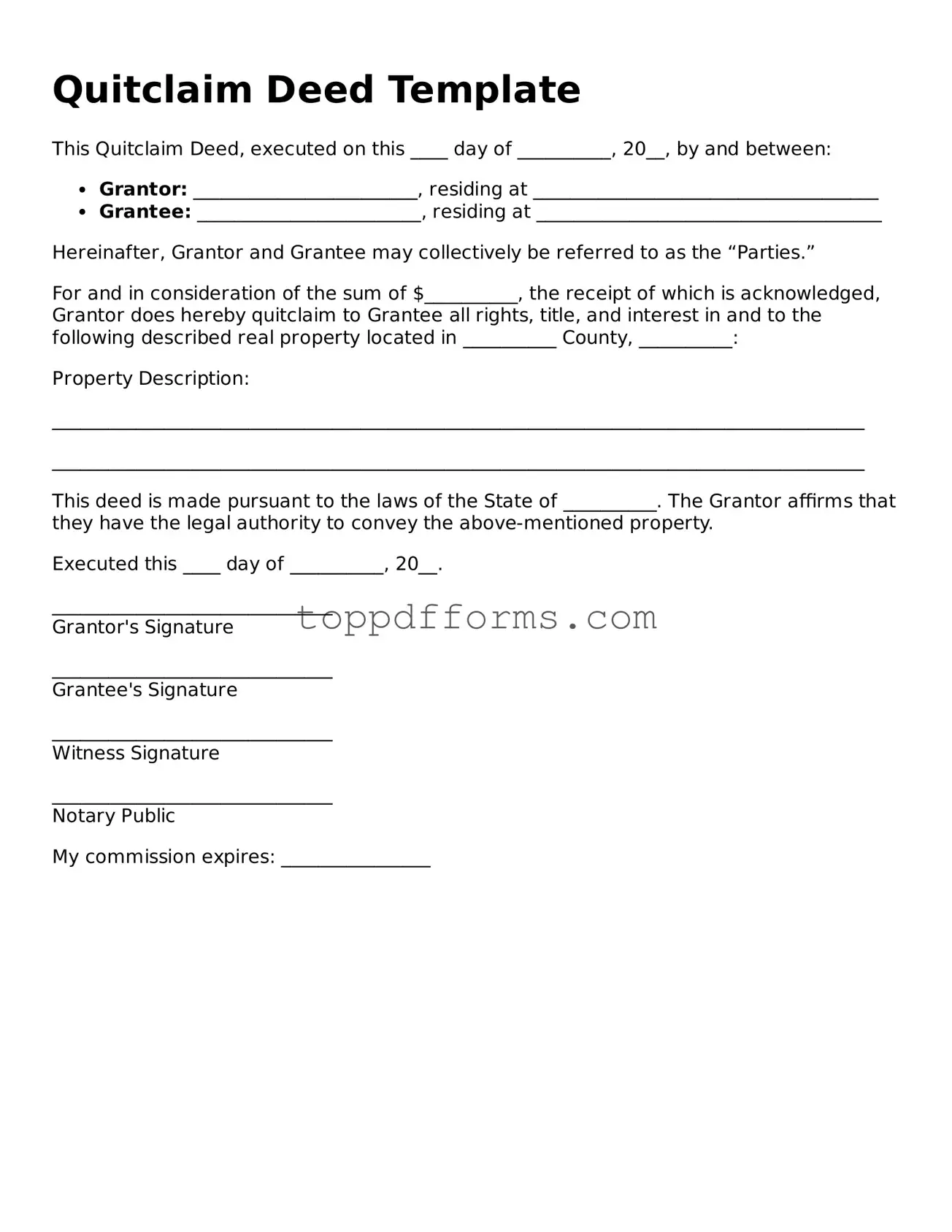Filling out a Quitclaim Deed form can seem straightforward, but there are several common mistakes that individuals often make. Understanding these pitfalls can help ensure that the deed is valid and serves its intended purpose. Here are ten mistakes to watch out for.
One frequent error is failing to include the correct names of the parties involved. It’s crucial to use the full legal names of both the grantor (the person transferring the property) and the grantee (the person receiving the property). Omitting or misspelling a name can lead to complications later on.
Another mistake is neglecting to provide a complete legal description of the property. A vague or inaccurate description can create confusion about what exactly is being transferred. Ensure that the property description matches what is found in public records to avoid any issues.
Many people forget to include the date of the transfer. This date is essential for establishing when the transfer took place and can impact the timing of various legal rights and obligations. Always double-check that the date is clearly stated.
Signing the Quitclaim Deed is a critical step, yet some individuals overlook the need for notarization. Most states require the signature of the grantor to be notarized to validate the deed. Without this step, the deed may not be enforceable.
Another common mistake is failing to record the Quitclaim Deed with the appropriate county office. Recording the deed is vital because it provides public notice of the transfer. If the deed is not recorded, future buyers may not be aware of the ownership change.
Some individuals do not understand the implications of the Quitclaim Deed itself. It’s important to remember that this type of deed does not guarantee clear title. It simply transfers whatever interest the grantor has, which may not be much. Make sure you are aware of what you are actually transferring.
In addition, people often overlook the need for consideration. While a Quitclaim Deed can be executed without money changing hands, it’s important to include some form of consideration, even if it’s nominal, to make the transaction legally binding.
Another mistake is not consulting with a legal professional when necessary. While it’s possible to fill out a Quitclaim Deed on your own, seeking advice can help clarify any uncertainties and ensure that all legal requirements are met.
Some individuals may also forget to provide the correct tax identification numbers for the parties involved. This information can be important for tax purposes and should not be neglected.
Lastly, failing to keep a copy of the completed Quitclaim Deed can lead to future problems. Always retain a copy for your records, as it serves as proof of the transfer and may be needed for various legal or financial matters down the line.
